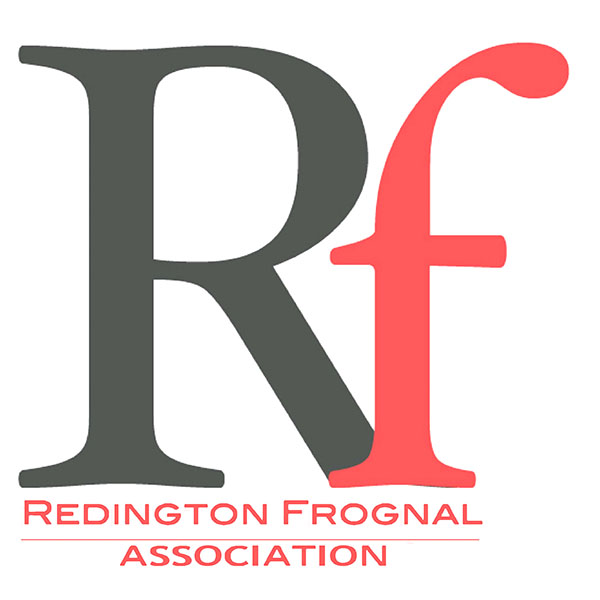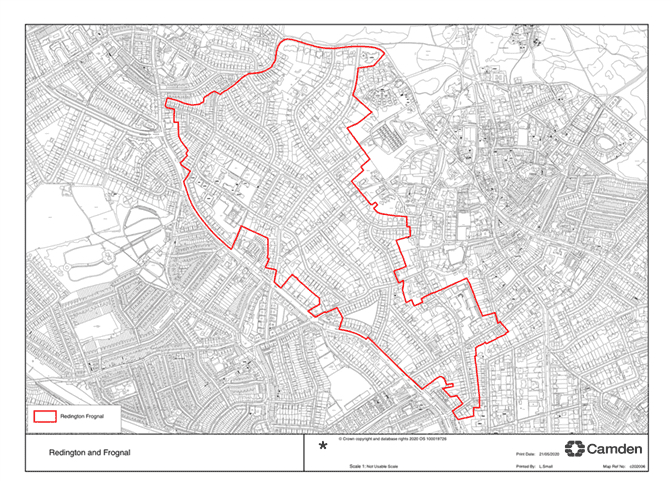
What is the Redington and Frognal conservation area appraisal and management strategy?
The updated Redington Frognal conservation area appraisal and management strategy was adopted in December 2023. It is available to view and download at:
https://www.camden.gov.uk/redington-and-frognal-conservation-area
The information below will help you understand what this document is and what information it includes.
The appraisal and management strategy defines and analyses what makes the Redington and Frognal conservation area ‘special’ and provides important information to local residents, community groups, businesses, property owners, architects and developers about the types of alterations and development that are likely to be acceptable or unacceptable in the conservation area.
This document is used in the assessment of planning applications for proposed developments in the Redington and Frognal conservation area.
The Redington Frognal Conservation Area encloses an area of Hampstead to the north-west of Camden, east of Finchley Road. The area is mainly suburban in character. It was designated in 1985 and extended in 1988 and 1992. The boundary was modified in 1991, with part being transferred to the Fitzjohn’s and Netherhall Conservation Area.
The special architectural or historic interest and character of the conservation area is based broadly on the following factors:
Landscape: The landscape infrastructure, influenced by garden suburbs, characterised by smaller front gardens and extensive rear gardens. Many front and rear gardens contain mature trees. The streets often have grass verges and are lined with street trees, notably veteran plane trees, planted when the streets were first laid out.
Townscape: The associated townscape characteristics, based on residential buildings set-back behind small front gardens or front courts, with low front walls or hedges. There are also some larger-scale mansion blocks. The scale of buildings varies greatly, from 3 storeys as the predominant height (this varies in different streets) to six storeys or more on part of Finchley Road (between Frognal and Frognal Lane).
Architecture: Buildings tend to have common features, reflecting their time of construction in the late 19th and first half of the 20th century. These are stylistically diverse, but predominantly draw on Queen Anne Revival and Arts and Crafts influences. In addition, there are a small number of individual buildings of distinctive design quality, sometimes contrasting dramatically with surrounding buildings.
Buildings are set back behind modest front gardens or grassed and landscaped strips (usually only a few metres deep). This creates a green character to streets, but also creates a clear enclosure and definition of those streets by the set-back building frontages and front boundary treatments. Many properties have large gardens to the rear. The arrangement of built forms set in extensive garden spaces creates the suburban, rather than urban, townscape character, with glimpses through the gaps between properties to the trees and gardens to the rear.
Causes of harm to the conservation area are identified as:
Front garden parking: The most serious form of harm in the Conservation Area is through removal of front boundary walls or hedges and hard surfacing of front gardens to create parking courts.
Loss of rear gardens: Loss of rear garden space and the open character of rear gardens through rear extensions, swimming pools, large garden buildings and excessive hard surfaced areas.
Loss of trees: Some street trees have been removed, leaving gaps in tree lines. Some garden trees have also been lost. Trees are a key part of the garden suburb character, so tree losses are particularly harmful.
Poor design: There are a small number of developments from recent decades which are architecturally mediocre or where footprint of buildings and hard surfacing leaves little garden or landscaped space.
Boundary treatments: Some front and side boundaries have had low walls, railings or hedges removed and replaced by higher timber fences or unsympathetic metal railings.
Where can I find out further information?
For further information on the Redington and Frognal conservation area appraisal and management strategy, please contact the duty planner at:
planning@camden.gov.uk
Hampstead Conservation Area Advisory Committee
Hampstead CAAC is a statutory consultee and advises Camden Council on general conservation policy and all planning applications and appeals in the Hampstead, Fitzjohns/Netherhall, Redington/Frognal and South Hill Park conservation areas. More information is available here: cindex.camden.gov.uk/kb5/camden/cd/service.page?id=tyZRdxYKNYY
